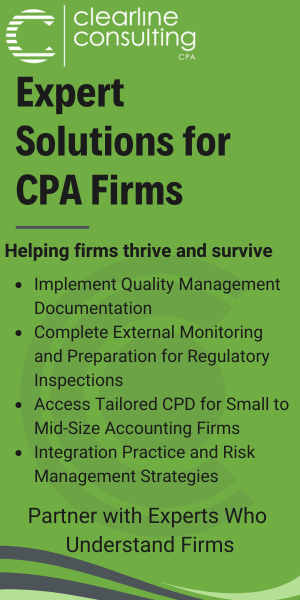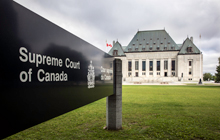A new era for the Canadian GAAR

Pooja Mihailovich and Leandra Gupta of Osler, Hoskin & Harcourt LLP say the new era may compound uncertainties and add to compliance and dispute costs
Canada's general anti-avoidance rule (GAAR) operates to negate tax benefits arising from "abusive" tax avoidance transactions. These are transactions that technically satisfy the requirements of the law, but are found to be contrary to the spirit or underlying policy of the legislation or its specific provisions. Since its introduction more than 30 years ago, the GAAR has operated effectively in preventing abusive tax avoidance. Canadian courts have crafted a rigorous analytical framework for the application of the GAAR and have continually sought to balance the need for certainty in tax planning against the desire to combat abuse.
In large part, the existing GAAR framework has maintained this balance. The Canadian tax authority has lost approximately 24 cases to date, despite having assessed taxpayers under the GAAR in more than 1,300 instances.
Notwithstanding this track record, the federal government has proposed material changes aimed at "modernizing" the GAAR. These changes are set to take effect in 2024 and will affect the way the GAAR operates in the future. Existing GAAR decisions from the Supreme Court of Canada and other courts will likely remain instructive on the application of this provision generally. However, the proposed amendments mark a new era in the evolution of the GAAR and introduce interpretative issues that will have to be addressed by businesses engaged in tax planning in the years to come.
Recent Supreme Court decisions
As interpreted and applied to date, the GAAR has operated to discourage abusive tax avoidance while preserving the long-established principle, recently upheld by the Supreme Court in Loblaw Financial Holdings, that taxpayers are entitled to order their affairs to minimize tax. The operation of the amended GAAR will have to be considered in the context of this jurisprudence and it remains to be seen how the amended aspects of the GAAR will be interpreted, in light of recent GAAR decisions of the Supreme Court in Alta Energy and Deans Knight Income Corp. The Loblaw and Alta Energy decisions are discussed more fully in our 2021 Legal Year in Review.
In Deans Knight, the Supreme Court affirmed that the GAAR analysis, if conducted in a rigorous manner, serves to ensure reasonable certainty in tax planning. The majority reasons also serve as a reminder that, in GAAR cases, taxpayers need to look beyond the text of the relevant provisions to determine Parliament's intentions. Legislative history, for example, is likely to play a more significant role in discerning the policy of those provisions and may outweigh the clear and otherwise unambiguous interpretation of the text. Indeed, given the expansive role given by the Court in Deans Knight to the search for Parliamentary intent, and the Court's guidance in that decision, it is debatable whether any amendments were required to modernize the GAAR.
Material legislative changes aimed at 'modernizing' the GAAR are slated to take effect in 2024.
Change is nonetheless inevitable. The latest draft of the proposed amendments were released on November 28, 2023, and are slated to take effect in relation to transactions occurring after January 1, 2024. The amendments include the introduction of a novel preamble to assist with interpretative issues, a lower threshold for establishing tax avoidance and a new "economic substance" test for determining abusive tax avoidance.
The draft amendments also impose a penalty and extend the normal limitation period in certain circumstances.
The amended GAAR
The GAAR currently applies where two requirements are met. First, there must be both a "tax benefit" and an "avoidance transaction." The latter is currently defined as a transaction that is undertaken primarily for tax purposes. Once the amended GAAR comes into effect, an avoidance transaction will be a transaction "one of the main purposes" of which is to obtain a tax benefit. Second, it must be demonstrated that the avoidance transaction, or the series of transactions of which it is a part, results in a "misuse or abuse" of particular tax provisions or of the legislation as a whole.
The burden of disproving the first two requirements rests with the taxpayer, while the onus of establishing a misuse or abuse remains with the tax authority.
The new economic substance test
The draft amendments introduce a new test to assess whether the transactions in issue "significantly" lack economic substance. They also provide a list of factors to be considered in making that determination. The factors all focus on the weighting of tax considerations relative to the economic benefits of the transactions in issue. In one scenario, the potential for gain or loss is unchanged. In another, the expected value of the tax benefit is greater than the expected non-tax economic return. Finally, the entire or almost entire purpose of the transaction or transactions could be to obtain the tax benefit.
The draft amendments provide that if the transactions are found to significantly lack economic substance, this is "an important consideration" that "tends to indicate" that the transactions result in abusive tax avoidance. It remains to be seen whether the explanatory notes that will ultimately be issued with the legislation will provide further guidance on how the new economic substance test will apply in practice.
Several important interpretative issues regarding the structure of the test will also need to be addressed by the courts in the coming years. This will include, for example, how the test might apply to each transaction within a series, as compared to the series overall and, as a practical matter, how taxpayers will be able to demonstrate that a transaction does not result in abusive tax avoidance even where it is found to significantly lack economic substance.
In the intervening period, taxpayers will need to carefully review the enumerated factors to ensure that any transactions being undertaken meet this economic substance test. In preparing to overcome the new economic substance test, taxpayers should proactively consider whether it can be objectively demonstrated, through legislative history or other interpretative aids, that the transactions were contemplated, or at least not discouraged, at the relevant time.
Penalty and extended limitation period
Under the amended GAAR, a substantial penalty has been introduced for transactions subject to the GAAR. The normal limitation period to issue a GAAR assessment has also been extended by an additional three years.
Both the penalty and the extended limitation period can be avoided if the taxpayer voluntarily discloses the transactions in issue to the tax authority. This is a significant shift in the operation of the GAAR. It was previously well-understood that the GAAR was not a penal provision and that taxpayers could not self-assess under the GAAR.
A taxpayer may also be able to avoid the new GAAR penalty under a token "due diligence" exception if the taxpayer can demonstrate that, at the time the transaction was undertaken, it was "identical or almost identical" to a transaction that was the subject of administrative guidance, government statements or court decisions. However, the purpose and utility of this exception is questionable. It is highly unlikely that the GAAR, and thus the penalty, would have applied to such transactions in any event.
Given the uncertainties introduced by the amended GAAR, including by the addition of the economic substance test, taxpayers will have to seriously consider whether to report transactions that they have prudently determined not to be abusive, or potentially risk facing the penalty or extended limitation period.
Concluding observations
In its current form, the GAAR has operated effectively in countering tax abuse while also ensuring a reasonable degree of certainty in tax planning. Notably, however, it took almost two decades for the courts to establish and refine the interpretative framework under which the GAAR is currently applied.
Pooja Mihailovich is a partner and Leandra Gupta is an associate in the Toronto office of Osler, Hoskin & Harcourt LLP ("Osler). This article was originally published in Osler Legal Outlook. Author images courtesy: Osler.










(0) Comments